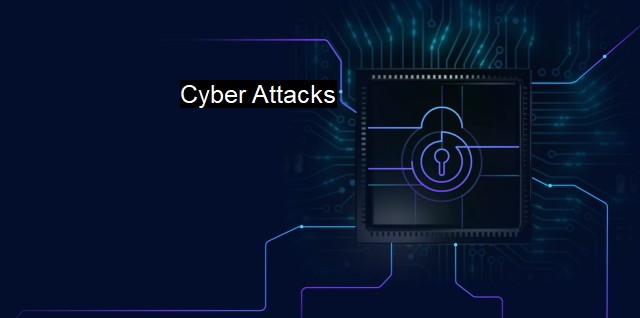What are Cyber Attacks?
Understanding and Preventing Cyber Attacks: A Comprehensive Guide to Recognizing, Preventing, and Recovering from Malicious Activities targeting Computers, Networks, and Devices.
Cyberattacks, within the scope of cybersecurity and antivirus measures, peak as a prevalent and escalating peril to the almost inseparable relationship between individuals, enterprises, or even governments and the technology they rely on incessively. The term unveils a dossier of various tactics, motivations, and individuals or groups involved. at its core, a cyberattack ensues when a malicious figure, may it be an individual hacker or organized criminal group, exploits vulnerabilities in a computer system or network with a strategic aim to cause harm by stealing, altering, or destroying specific data. The damages from such an assault can range from identity theft, financial losses to collapsing an entire organization’s infrastructure, making comprehensive prevention paramount.Cyberattacks can be categorized into different types based on functionality. One essential type is malware – a term encompassing viruses, Trojan horses, ransomware, worms, and spyware. These infections involuntarily download onto a system when a malicious link or attachment is opened, providing unauthorized access and ravaging havoc. As the name implies, ransomware holds files or systems hostage, barring access until a ransom is paid – typically via untraceable cryptocurrency.
Phishing attacks are another genus that fools users into unwarily exposing sensitive information – such as passwords or credit card details – by mimicking trustworthy communication, frequently via email. Much like a form of cyber con-artistry, the hacker deceives their victim into trusting their harmful intentions as legitimate. Spear Phishing inherits the Phishing model but tends to target specific individuals or organizations instead.
The DDoS (Distributed Denial of Service) attack seeks to overload a website or network with traffic – usually from a botnet of ‘zombie’ computers – so that the system crashes, resulting in service interruptions or temporal shutdowns. Similarly, SQL injection exploits a vulnerability in a website’s software to manipulate a site’s database, tampering with crucial details, erasing data, or stealing confidential information.
Meticulously, ensuring high-grade cybersecurity indicates guarding against these attacks to the best of one’s ability – which is where antivirus software arrives into play. Antivirus software educates as a pivotal layer of defense against cyberattacks. It scans a computer or network relentlessly for malicious software – or ‘malware’ and either blocks or quarantines it before it can effect any damage.
Possessing more intricate designs, advanced suites also offer firewall protections to block unauthorized access to your system, along with features specially devised to counter more explicit threats such as phishing or ransomware. Notably, they may comprise of utilities to flag phishing attempts, provide real-time protection against zero-day threats, testing suspicious files in an isolated environment, and using machine learning to identify never-seen-before malware based on its behavior.
Understandably though, antivirus software is seldom a silver bullet. Humans are frequently the weakest link cybersecurity defenses – susceptible to deception tactics employed by cybercriminals, like Social Engineering. Authorities, corporations, or individuals must invest to raise awareness and train users to be vigilant about seemingly mundane actions playing catalysts to significant dangers.
Routine updates and system patches too employ salient roles. Each denotes firms rectifying design errors where cyberattackers could establish dominance, and thus to avoid cyberattacks, regularly upgrading software is crucial. Equally important are safe and robust password protocols, alongside multi-factor authentication providing additional layers of security.
Lastly, it is vital to recognize the necessity of data backups. A particularly effective countermeasure to ransomware: backups settle that even in destructive scenarios – where original data is irretrievable – recovery remains plausible.
The nebulous notion of cyberattacks enlists conquering an expanding melange of increasingly sophisticated threats to our digital world. Sustaining a robust cybersecurity posture consolidates not just antivirus software but also a thorough understanding and anticipation of potential threats and vulnerabilities, buttressed by dogged vigilance, discerning human conduct, and regular system upgrades and maintenance. Indeed, cybersecurity merits an ongoing effort to stay afloat in a constant game of cat and mouse against the relentlessness of cyber threats.

Cyber Attacks FAQs
What is a cyber attack?
A cyber attack is an attempt to exploit security weaknesses in a computer system or network. Cyber attackers can gain unauthorized access to sensitive data, install malware, or cause system shutdowns.What are the types of cyber attacks?
There are many types of cyber attacks, including malware attacks, phishing attacks, denial-of-service attacks, and ransomware attacks.How can I protect myself from cyber attacks?
To protect yourself from cyber attacks, you can use antivirus software, keep your operating system and applications up-to-date, use strong passwords, and be cautious of suspicious emails and links. It's also important to regularly backup your important data.What should I do if I've been a victim of a cyber attack?
If you've been a victim of a cyber attack, you should immediately disconnect from the internet, run a virus scan on your computer, and change any compromised passwords. It's also recommended to report the incident to your IT department or a cybersecurity professional. If your personal information has been stolen, you should monitor your credit reports and consider placing a fraud alert or freeze on your credit.| | A | | | B | | | C | | | D | | | E | | | F | | | G | | | H | | | I | | | J | | | K | | | L | | | M | |
| | N | | | O | | | P | | | Q | | | R | | | S | | | T | | | U | | | V | | | W | | | X | | | Y | | | Z | |
| | 1 | | | 2 | | | 3 | | | 4 | | | 7 | | | 8 | | |||||||